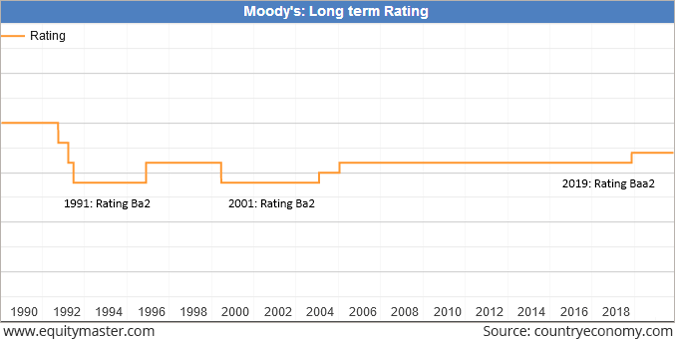- Home
- Todays Market
- Indian Stock Market News April 29, 2020
Sensex Opens Higher; Power and Realty Stocks Lead Wed, 29 Apr 09:30 am
Asian stock markets are higher today as Chinese and Hong Kong shares show gains. The Shanghai Composite is up 0.7% while the Hang Seng is up 0.6%. The Nikkei 225 is trading down by 0.1%. Wall Street's major indices lost ground on Tuesday as investors moved out of market-leading growth stocks, though a rotation into cyclical value stocks indicated hopes of economic revival as states began to relax restrictions enacted to fight the deadly COVID-19 pandemic.
Back home, India share markets open higher. The BSE Sensex is trading up by 131 points while the NSE Nifty is trading up by 41 points. Both, the BSE Mid Cap index and BSE Small Cap index opened up by 0.5%.
Except banking stocks, all sectoral indices are trading in green with power stocks and realty stocks witnessing maximum buying interest.
Moving on, gold prices are currently trading down 0.3% at Rs 46,066.
The rupee is currently trading at 76.01 against the US$.
The Indian rupee rose by 7 paise to close at 76.18 against the US dollar on Tuesday, tracking positive domestic equities and a weak American currency in the overseas market.
This is the second consecutive day of gain for the rupee, during which it has appreciated by 28 paise.
At the interbank foreign exchange, the rupee opened at 76.33.
During the session it touched an intra-day high of 76.14 and a low of 76.44. The domestic unit finally settled at 76.18, registering a rise of 7 paise over its previous close.
In a recent article titled The Sharp Fall in Indian Rupee: 6 Points to Know, we dive deeper and look at the factors behind rupee's depreciation.
We also reached out to Vijay Bhambwani, editor of Weekly Cash Alerts, who is closely tracking the Indian rupee in the current scenario. Here's what he has to say...
- The onset of Corona virus has not been kind to the INR.
The Rupee futures (USDINR) opened in March at 72.36 and have closed at 76.61 on April 09 2020. That is a decline of 5.87% in 6 short weeks.
The implications of the same will be widespread. India is a net importing Country. Everything that we import will now be more expensive. Approximately two thirds of all our imports are fossil fuels. Fuels are what we call multiplier effect commodities. If fuel prices rise at the petrol pumps, everything from fruits, vegetables, grains to dairy and poultry products get expensive.
That impact will be felt at a later date. I expect the trickle down effect to start appearing in prices after the April-June quarter is over.
I have already factored in this aspect in my statistical data model and plan to identify such events to generate profitable trading opportunities for my WCA plan subscribers.
Vijay has also talked about the Indian currency in a special edition podcast from Investor Hour. He shares what's around the corner for Indian rupee and how should position oneself for potential gains.
You can listen the entire episode here...

Moving on to the news from the economy. Moody's Investors Service slashed India growth forecast for calendar year 2020 to 0.2%, from 2.5% projected in March.
For 2021, Moody's expects India's growth to rebound to 6.2%.
Asper the report, Moody's has lowered G-20 advanced economies as a group to contract by 5.8% in 2020.
Moody's said the economic costs of coronavirus crisis amid the near shutdown of the global economy are accumulating rapidly.
Note that, the Moody's indicator, is typically very late to caution on risks. So late in fact, that now it is time to look forward to the upside.
As our co-head of research, Tanushree Banerjee says, investors who take Moody's downgrade of India too seriously, will either suffer losses or miss the bus on the upside.
Take a look at this chart.
Terrible Track Record of Rating Downgrades
Every time, Moody's has slashed India's rating below the 'stable' category, the economy has bottomed out.
And a stock market boom followed.
So, smart investors who bought stocks after Moody's rating downgrade in 1992 and 2002, created life-changing wealth for themselves.
You need to do the same today.
Here's a snippet of what she wrote in one of the editions of The 5 Minute WrapUp:
- "Take advantage of the negativity in the stock market and buy the best stocks that are poised to ride India's economic recovery.
The Moody's rating downgrade will not affect the Rebirth of India at all.
It will also not affect my pick of the 7 best stocks in the market.
The ratings downgrade could only serve my readers, like you, to buy these stocks at valuations that are favourable.
And don't be in a hurry to see markets soar.
Stay assured that the Moody's rating downgrade is a final indicator of an inflection in India's economic and stock market potential.
It is a sign to buy."
To know what's moving the Indian stock markets today, check out the most recent share market updates here.
For information on how to pick stocks that have the potential to deliver big returns, download our special report now!
Read the latest Market Commentary



Equitymaster requests your view! Post a comment on "Sensex Opens Higher; Power and Realty Stocks Lead". Click here!
Comments are moderated by Equitymaster, in accordance with the Terms of Use, and may not appear
on this article until they have been reviewed and deemed appropriate for posting.
In the meantime, you may want to share this article with your friends!